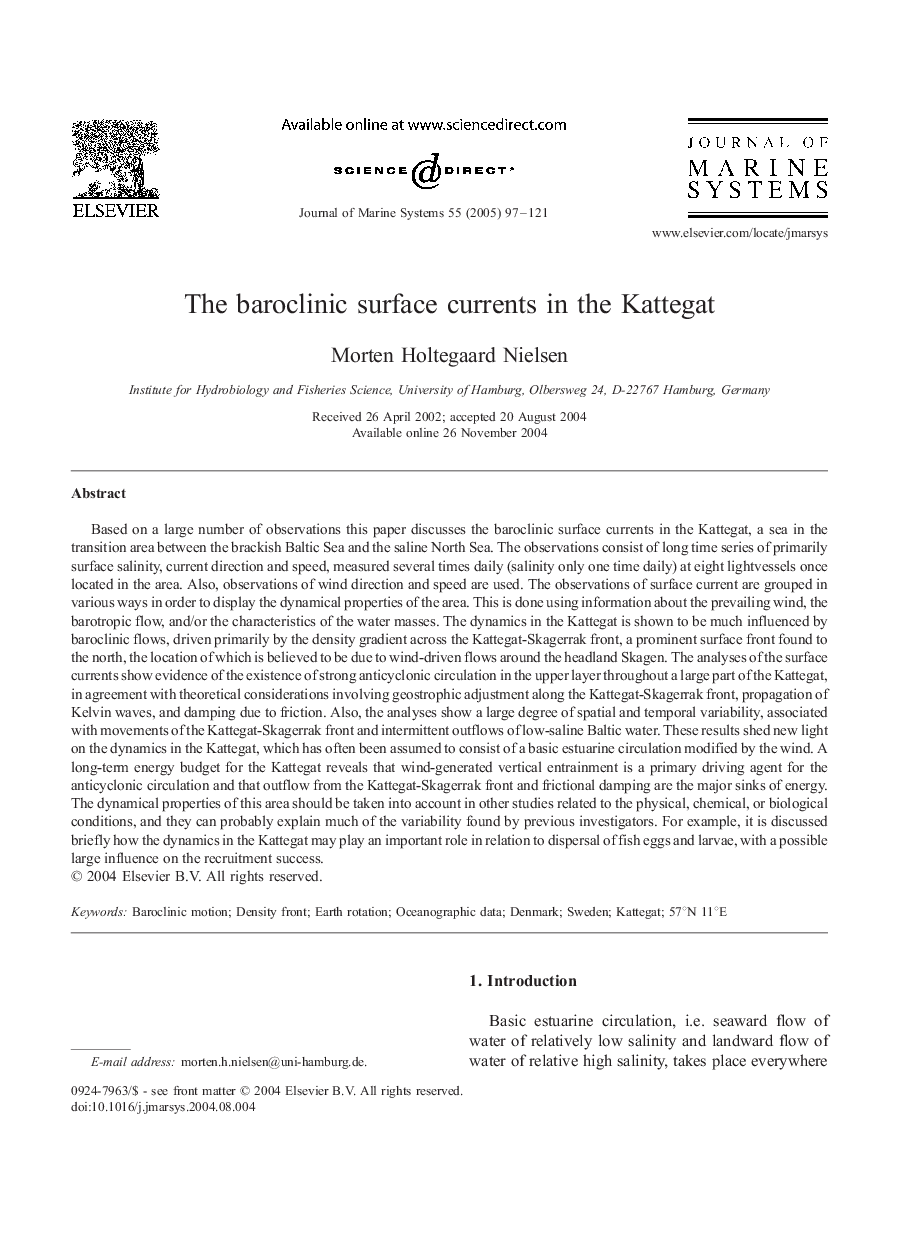| کد مقاله | کد نشریه | سال انتشار | مقاله انگلیسی | نسخه تمام متن |
|---|---|---|---|---|
| 9483484 | 1627376 | 2005 | 25 صفحه PDF | دانلود رایگان |
عنوان انگلیسی مقاله ISI
The baroclinic surface currents in the Kattegat
دانلود مقاله + سفارش ترجمه
دانلود مقاله ISI انگلیسی
رایگان برای ایرانیان
کلمات کلیدی
موضوعات مرتبط
مهندسی و علوم پایه
علوم زمین و سیارات
اقیانوس شناسی
پیش نمایش صفحه اول مقاله

چکیده انگلیسی
Based on a large number of observations this paper discusses the baroclinic surface currents in the Kattegat, a sea in the transition area between the brackish Baltic Sea and the saline North Sea. The observations consist of long time series of primarily surface salinity, current direction and speed, measured several times daily (salinity only one time daily) at eight lightvessels once located in the area. Also, observations of wind direction and speed are used. The observations of surface current are grouped in various ways in order to display the dynamical properties of the area. This is done using information about the prevailing wind, the barotropic flow, and/or the characteristics of the water masses. The dynamics in the Kattegat is shown to be much influenced by baroclinic flows, driven primarily by the density gradient across the Kattegat-Skagerrak front, a prominent surface front found to the north, the location of which is believed to be due to wind-driven flows around the headland Skagen. The analyses of the surface currents show evidence of the existence of strong anticyclonic circulation in the upper layer throughout a large part of the Kattegat, in agreement with theoretical considerations involving geostrophic adjustment along the Kattegat-Skagerrak front, propagation of Kelvin waves, and damping due to friction. Also, the analyses show a large degree of spatial and temporal variability, associated with movements of the Kattegat-Skagerrak front and intermittent outflows of low-saline Baltic water. These results shed new light on the dynamics in the Kattegat, which has often been assumed to consist of a basic estuarine circulation modified by the wind. A long-term energy budget for the Kattegat reveals that wind-generated vertical entrainment is a primary driving agent for the anticyclonic circulation and that outflow from the Kattegat-Skagerrak front and frictional damping are the major sinks of energy. The dynamical properties of this area should be taken into account in other studies related to the physical, chemical, or biological conditions, and they can probably explain much of the variability found by previous investigators. For example, it is discussed briefly how the dynamics in the Kattegat may play an important role in relation to dispersal of fish eggs and larvae, with a possible large influence on the recruitment success.
ناشر
Database: Elsevier - ScienceDirect (ساینس دایرکت)
Journal: Journal of Marine Systems - Volume 55, Issues 3â4, April 2005, Pages 97-121
Journal: Journal of Marine Systems - Volume 55, Issues 3â4, April 2005, Pages 97-121
نویسندگان
Morten Holtegaard Nielsen,